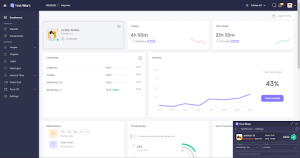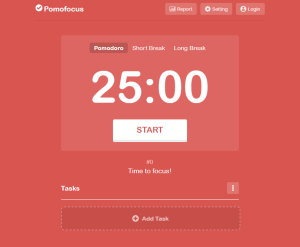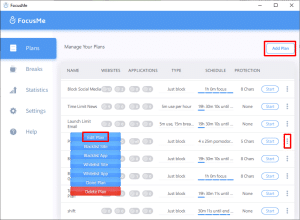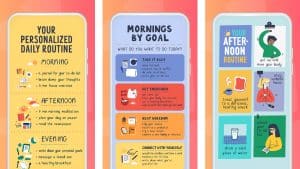Procrastination is something pretty much everyone has experienced in their lives. It is a measurable hindrance to productivity, and can cause your projects to take ages to complete. If you’re looking to counter procrastination, then you’re in luck. In this article, we’ll explore 5 tools that will help you stop procrastinating.
Before diving into our main topic, however, let’s briefly cover the basics: what is procrastination?
What Is Procrastination?
Procrastination is a widely spread concept known to hinder success and kill productivity. Though commonly mistaken for laziness, procrastination has a more complex consistency. In this article, we will take a look at what constitutes procrastination, where it comes from, and what tools can help stop procrastinating.
According to an HBR’s “How to Stop Procrastinating”, procrastination stems from a lack of discipline. NYT’s “Why You Procrastinate” claims that it is directly connected with negative emotions and associations. However, what these two theories have in common is that when procrastinating, we tend to deal with negative emotions by avoiding the task. Instead, we should care about the future result.
More and more studies argue that procrastination is not connected with laziness. For example, some people may procrastinate and avoid working on a presentation by doing other work. This way they get a sense of accomplishment while getting other things done. You may call this productive procrastination, but it’s also commonly referred to as “structured procrastination”. This term was coined by philosopher and Stanford University professor John Perry.
While productive or structured procrastination is not a solution, it’s considered the start of dealing with the problem. This method implies adding your daily minor activities, like turning off the alarm, to your to-do list and crossing them over. This method should set the mood for feeling accomplished and ease the process of overcoming procrastination.
Considering the emotional side of procrastination, it is not an easy thing to overcome.
First, you need to identify your emotions – especially those connected with tasks that you tend to procrastinate doing.
Only then should you start using tools that can help stop procrastinating—accompanying you in the process.
Tools That Will Help You Stop Procrastinating
Let’s now dive into our main topic and explore 5 tools that can help you stop procrastinating—starting with WebWork.
1. WebWork Time Tracker

Time management is the first step in dealing with procrastination. It means having control over your time and your actions.
Start by allocating a certain time to each of your tasks. You can then use WebWork to see how much time exactly you spend on each.
When you have a visual representation of your time, you can clearly see how much each activity takes. This will make you more mindful about how you spend your time.
You can take your time management to the next level by using a time management technique, like timeboxing or time blocking.
Another useful thing about such strategies is that time tracking will help you form a routine.
When you have a routine, you form habits, and when you have habits, you do not have to force yourself to do things. You just do them.
WebWork also has a task management system, where you can organize your tasks and see how much time they take.
In case you worry about concentration, WebWork takes care of that too. Whenever you get distracted, it will open a pop-up reminding you to focus on your task.
2. Pomofocus

Speaking of concentration, learning how to stay focused is the next step to stop procrastinating.
When you are an experienced procrastinator, you may want to work on your concentration skills too. There are tools that can help you stay focused or not get distracted at least.
One such tool is Pomofocus. Sounds familiar, doesn’t it? As the name suggests, it uses the Pomodoro technique.
In case you are not familiar with the Pomodoro technique, it suggests 4 sessions of 25-minute work and 5-minute breaks followed by a 15-minute break. These are the default minutes, but you can change them according to your preferences.
Pomofocus is super easy to use. When you enter the website, all you can see is 25 in big fonts and the button Start. There is nothing else you need to figure out. Just click on start, and go about your business.
If you find it hard to concentrate for 25 minutes, which is expected, you can start with a shorter interval, say 15 minutes of work and build up from there.
3. FocusMe

If you want hardcore concentration, FocusMe takes concentration to a whole new level. You can block distracting apps, websites, or even the whole internet. If blocking is too much, you can just limit the time you spend on them. FocusMe also has the Pomodoro technique.
In other words, it makes you focus on work and has all the necessary tools to do so. By improving your concentration skill, it helps you learn to stop procrastinating much faster.
But remember that it is you who needs to make the first step, which is identifying your problem and using the right tools.
4. Fabulous

As said previously, acquiring habits and habit-forming skills simplifies the process of overcoming procrastination even more. One way to start doing unappealing tasks, is to turn them into habits, or a little close to habits.
Fabulous is an app that helps you form habits and routines by taking small steps. It makes you start small and work up gradually. For example, you can start by drinking water every morning right after waking up. The app will send you a notification every morning at your set time and keep motivating you to do the tasks.
What makes Fabulous special is its beautiful and peaceful design combined with ambient music. This concept makes the tool inspiring even for those who do not struggle with procrastination but would still want to improve their routine.
5. Trello

Having a visual board with all of your tasks in sight is a great way of organizing your day and finally attending to the activities you tend to avoid.
Trello is a project management platform that works great for personal use. I especially like the kanban board mode, where you can have your tasks organized neatly.
Imagine not just starting and finishing your tasks and actions but also physically moving them from the first stage to the last.
On Trello’s kanban board, you can have three groups, namely To Do, Doing, and Done. Whenever you start working on a task, you go on Trello and move the task to Doing. This way you may feel accountable for starting, doing, and finishing.
Of course, the whole dashboard is customizable. If you prefer tables or calendars instead of boards, you can choose your preferred view. Other than these views, you can also set your preferred background, be it a cat picture or a piece of artwork.
Conclusion
We procrastinate and avoid doing what we must do as we prefer the short-term solution over the long one. However, avoidance is by no means going to solve the issue, but rather put it off and maybe even make it bigger.
To stop procrastinating, you must first identify your emotions connected with your procrastination. Most of the time, these are negative emotions that we choose to avoid instead of tackling.
After identifying your emotions, you can turn to the help of digital tools mentioned in this article.
Tools like time trackers, concentration and project management tools will help you be more organized and responsible towards your goals.
Start using these tools now and you’ll see an instant difference.
Seriously, do not procrastinate this time!
Access WebWork to simplify tasks and enhance efficiency effortlessly.
